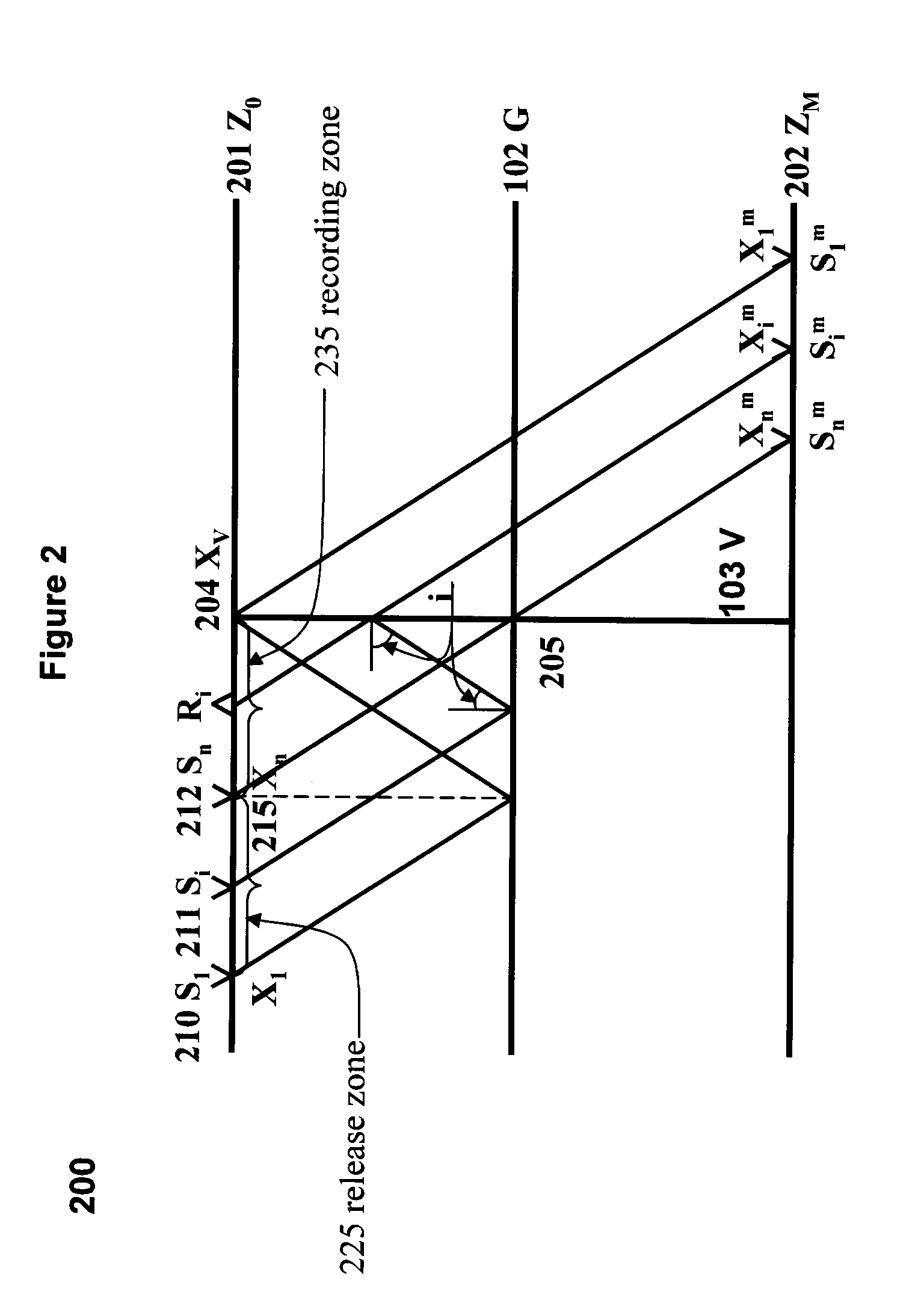Method of surface seismic imaging using both reflected and transmitted waves
a technology of transmitted waves and reflected waves, applied in the field of surface seismic data processing, can solve the problems of limited practical efficiency of such an approach, inability to realistically process actual seismic data, and insufficient primary reflections to generate unambiguous images, so as to improve the reliability and stability of imaging boundaries, improve forecasting efficiency, and expand the information base available
- Summary
- Abstract
- Description
- Claims
- Application Information
AI Technical Summary
Benefits of technology
Problems solved by technology
Method used
Image
Examples
example 1
Forecast the Presence of Gas Deposits in Vertical Contacts, in Particular, Salt Domes and Clastic Deposits
[0046]The amplitudes of the reflected and transmitted waves on the vertical contact of two media are at a fixed incident angle i, however, using common shot gathers, one cannot provide separate images characterized by a constant incident angle at the vertical boundary. Thus the image is formed using the four types of waves and it is useful to keep the incident angle at the sub-vertical boundary constant. Thus, imaging the vertical boundary can be considered the first step in determining medium parameters, so the location and inclination of the sub-vertical boundary, typically unknown, are determined. Once the geometry of the boundary is determined, we proceed to the second stage—determination of Poisson's ratio across the contacting media.
[0047]Referring now to FIG. 1, as seen in the ray drawing generally denoted as 100, a surface 101 (also denoted as “X”) and a horizontal base ...
example 2
Imaging a Thin Vertical Layer Interrupting a Given Media
[0096]Referring now to FIG. 4 we consider the case of thin vertical layer 410 (e.g. a fractured zone or an intrusion of either salt or igneous rocks, etc.) interrupting a given media. Similar to the manner explained and shown in FIG. 1, a downward traveling wave 106 incident on layer 410 will create four types of waves. Migration of compressional transmitted waves does not assist with this case, since the velocity before and after the sub vertical layer is the same. However, converted transmitted waves do assist us because their velocity differs. Select the seismogram for source 105 S and downward continue it to level Zi with the shear wave velocity of the medium, ignoring thin vertical layer 410 for the moment due to its small contribution to the velocity model. By applying DWM and selecting the seismic image I with compressional wave velocities we obtain an image of thin vertical layer 410 formed using reflected and transmitt...
example 3
Imaging Layers Having Arbitrary Dip-Angles
[0107]Advantageously, migration of transmitted converted duplex waves can be used to form images of both sub vertical and horizontal layers (i.e. layers of arbitrary dip-angle) having practically an unlimited range of dip angles. As explained above, we select the zone between the shot-receiver locations when using converted transmitted duplex waves for imaging. Images of both sub vertical and horizontal boundaries may be formed simultaneously.
[0108]Referring now to FIG. 7 we see an example of seismic imaging based on converted transmitted duplex waves, where image 701 is the model of upward-thinning layer and a number of horizontal discontinuities, and image 702 shows a vertical layer constructed using transmitted converted duplex waves and formed at X=4000M, such that both vertical and horizontal layers correspond to the model. It may be observed in FIG. 7 that artifacts appear close to the vertical layer, thereby complicating the image of ...
PUM
 Login to View More
Login to View More Abstract
Description
Claims
Application Information
 Login to View More
Login to View More - R&D
- Intellectual Property
- Life Sciences
- Materials
- Tech Scout
- Unparalleled Data Quality
- Higher Quality Content
- 60% Fewer Hallucinations
Browse by: Latest US Patents, China's latest patents, Technical Efficacy Thesaurus, Application Domain, Technology Topic, Popular Technical Reports.
© 2025 PatSnap. All rights reserved.Legal|Privacy policy|Modern Slavery Act Transparency Statement|Sitemap|About US| Contact US: help@patsnap.com



